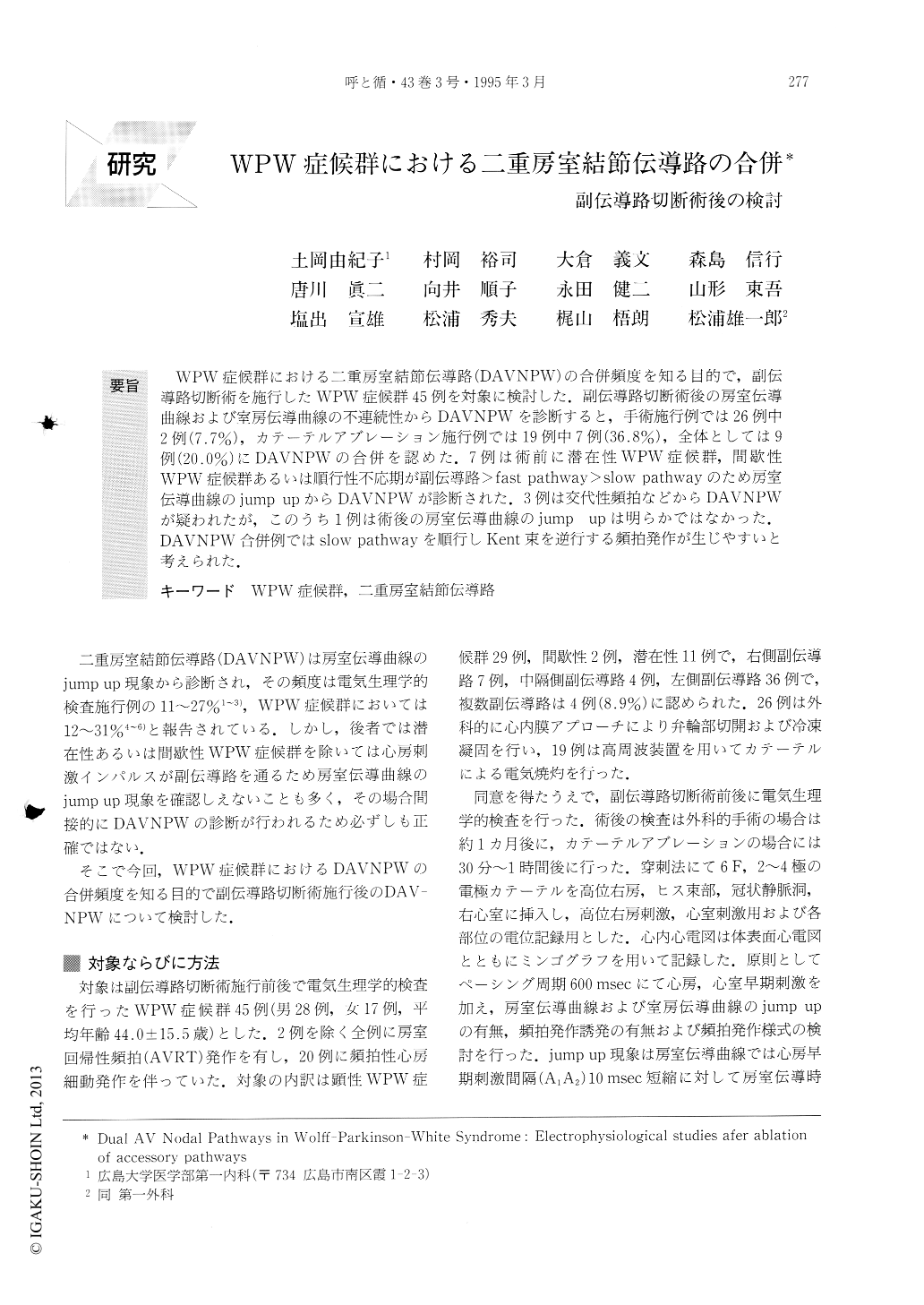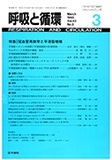Japanese
English
- 有料閲覧
- Abstract 文献概要
- 1ページ目 Look Inside
WPW症候群における二重房室結節伝導路(DAVNPW)の合併頻度を知る目的で,副伝導路切断術を施行したWPW症候群45例を対象に検討した.副伝導路切断術後の房室伝導曲線および室房伝導曲線の不連続性からDAVNPWを診断すると,手術施行例では26例中2例(7.7%),カテーテルアブレーション施行例では19例中7例(36.8%),全体としては9例(20.0%)にDAVNPWの合併を認めた.7例は術前に潜在性WPW症候群,間歇性WPW症候群あるいは順行性不応期が副伝導路>fast pathway>slow pathwayのため房室伝導曲線のjump upからDAVNPWが診断された.3例は交代性頻拍などからDAVNPWが疑われたが,このうち1例は術後の房室伝導曲線のjump upは明らかではなかった.DAVNPW合併例ではslow pathwayを順行しKent束を逆行する頻拍発作が生じやすいと考えられた.
To clarify the incidence of dual atrioventricular (AV) nodal pathways (DAVNPW) in Wolff-Parkinson-White syndrome, electrophysiological studies were performed in 45 patients with WPW syndrome before and after ablations of accessory pathways. Twenty nine patients were manifest. 2 were intermittent and 11 were con-cealed WPW syndrome. Twenty six patients under-went surgical cryoablations by the endocardial approach and 19 underwent catheter ablations. In 9 of the 45 patients (20.0%) there was a rise to over 50 msec on the AV conduction curve. Surgical ablations were carried out on 2 subjects and catheter ablations were carried on 7 subjects. The AV reciprocating tachycar-dia (AVRT) was more inducible in patients with WPW syndrome and DAVNPW. The reentrant circuits often used slow pathways for antegrade conduction andaccessory pathways for retrograde conduction. One patient, who had alternative AVRT before, showed no rises on the AV conduction curve after the operation. Another patient showed no rise on the AV conduction curve either before or after surgery, but AV nodal reentrant tachycardia (uncommon type) was induced after surgery.

Copyright © 1995, Igaku-Shoin Ltd. All rights reserved.


